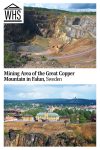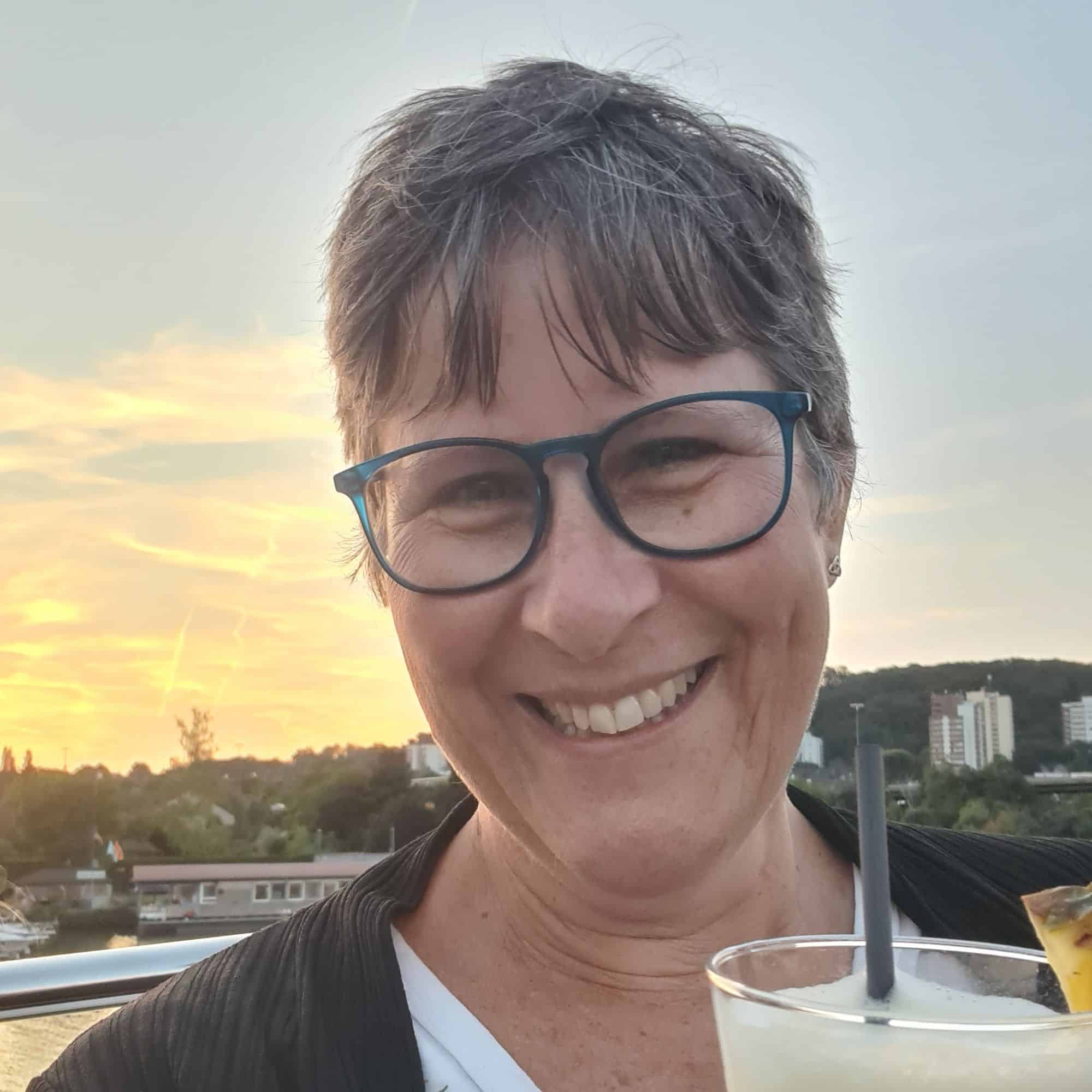Mining Area of the Great Copper Mountain in Falun
By Rachel Heller
What is the Mining Area of the Great Copper Mountain in Falun?
This area of Sweden was a center of copper mining starting in the 9th century and continuing until the late 20th century. The peak of its importance was in the 17th century, when Sweden dominated Europe’s copper market.
Disclosure: This article contains affiliate links. Making a purchase through an affiliate link will mean a small commission for this website. This will not affect your price. Privacy policy.
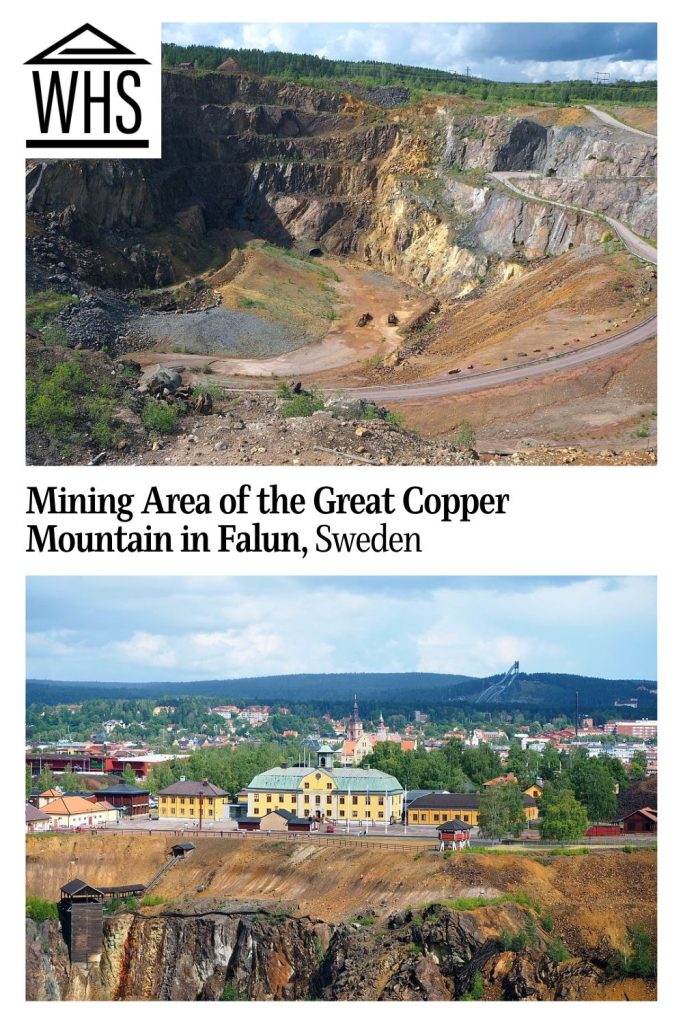
The site centers on the Great Pit in Falun, where enough is preserved to see the evolution of mining technology from the early small-scale mining of the Middle Ages through the development of technology over the centuries. In addition, the planned town of Falun next door arose as housing for the mining community.
Why is Falun mining area a UNESCO World Heritage site?
According to UNESCO, the development of Falun influenced mining technology worldwide. Its remains – the pit, but also the landscape, the various mine-related buildings, and the town of Falun – demonstrate how the copper industry has evolved over the centuries.
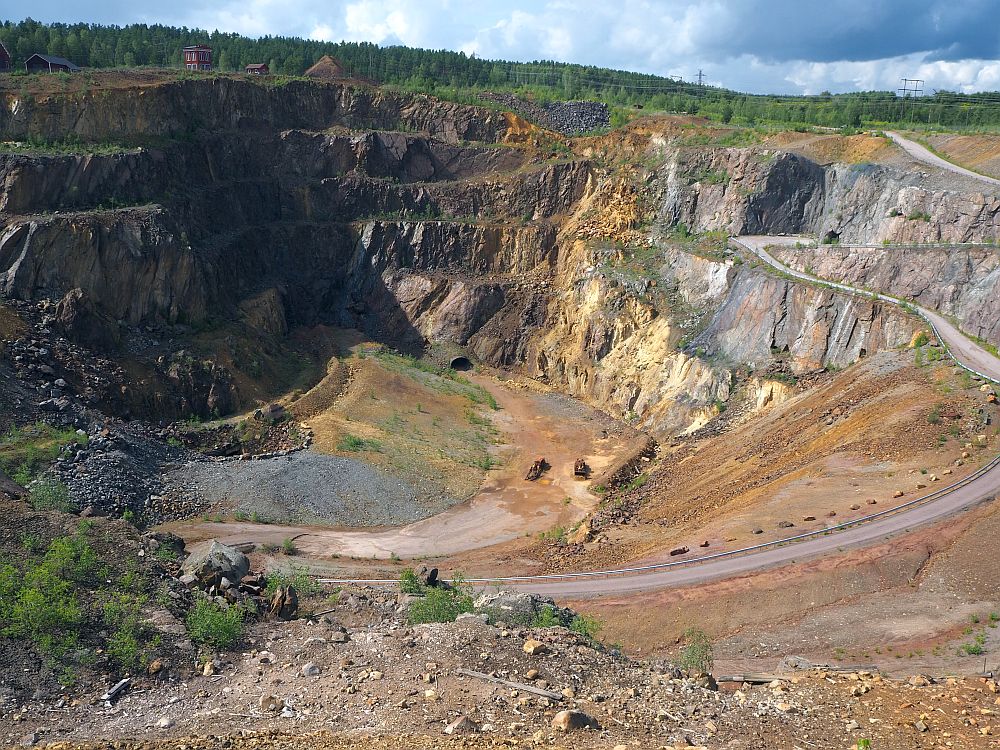
What can you expect on a visit to Falun?
The Great Pit is just like it sounds: a very large hole in the ground. Tours are offered into the mine tunnels where you’ll learn about how mining was carried out and what life was like for the miners in both pre-modern times, when mining was done largely by hand, and later, with the advent of technology.
A path leads around the mine’s edge, past various related buildings, e.g. a wheelhouse, laves that cover the mine shafts where the rock was pulled up and/or water was pumped out, housing for workers, and huge piles of rocks: the slag that was left once the ore was removed.
A museum occupies the old mine office and contains some interesting and very interactive displays.
The town of Falun, unlike the mine, is very pretty, with its little red-painted houses. This red color, popular all over Scandinavia, is called Falun Red, and, historically at least, came from this mine as a byproduct of heating copper ore. Read more about Falun and Falun Red here.
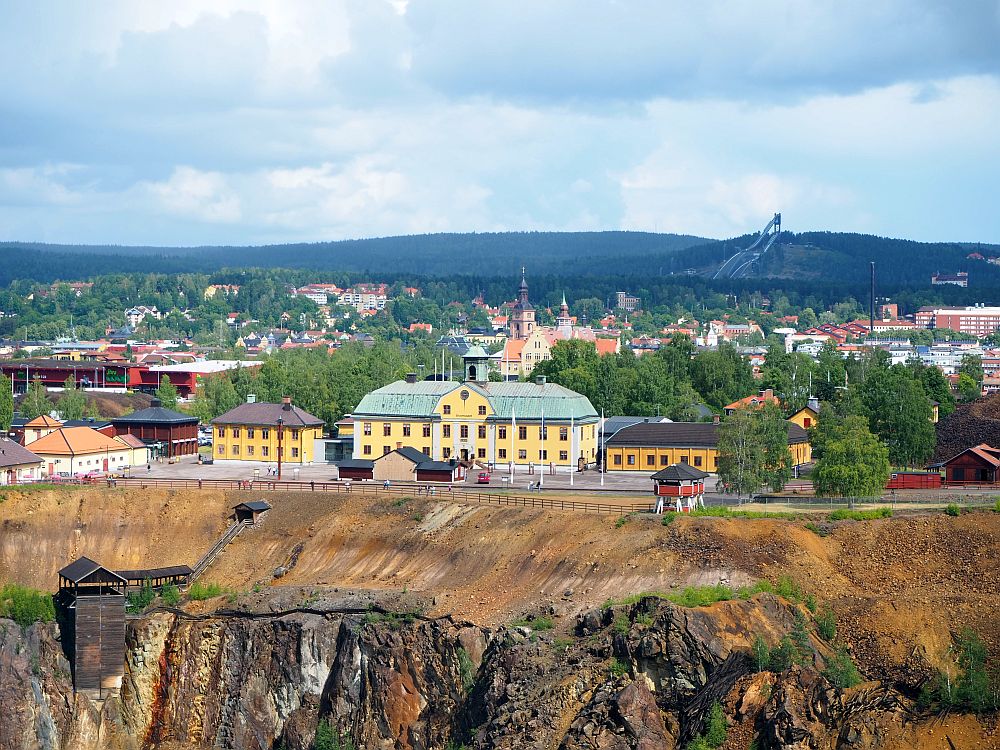
What sorts of travelers would like the Mining Area of Falun?
If you’re interested in industrial history, this would certainly interest you. It’s quite a hit with kids, too, since the tour involves “exploring” tunnels underground and wearing a hardhat. The museum is very much geared toward making the science and engineering of the mining industry accessible and fun for children.
The mine itself in inaccessible for wheelchair users, but the path around the mine is doable. It’s gravel so it might be good to have someone to help you if needed.
Tips for visiting the Great Copper Mountain in Falun
Wear supportive, waterproof shoes. It’s wet in the mine. Wear layers because even if it’s warm outside, it’ll be cold in the mine.
If you see all of the mine and the museum, take the tour and stroll the town, you’re likely to need 3-4 hours. It’ll be more if you have kids and want to let them try everything in the museum.
Right next to the Great Pit is a B&B called Polhem. For other accommodations in the area, click on the map below:
Where is Falun mine?
The mine’s address is Gruvplatsen 1 in Falun, Sweden.
Falun is about 2 hours and 40 minutes north of Stockholm on route 70. Parking is available on the site.
By train it’ll take a bit over 3 hours. You can walk about a half hour from the train station or take a bus.
For more information about Falun, its opening hours and admission fees, see its official website.
Have you been to the Great Copper Mountain in Falun? If so, do you have any additional information or advice about this UNESCO World Heritage site? Please add your comments below!

